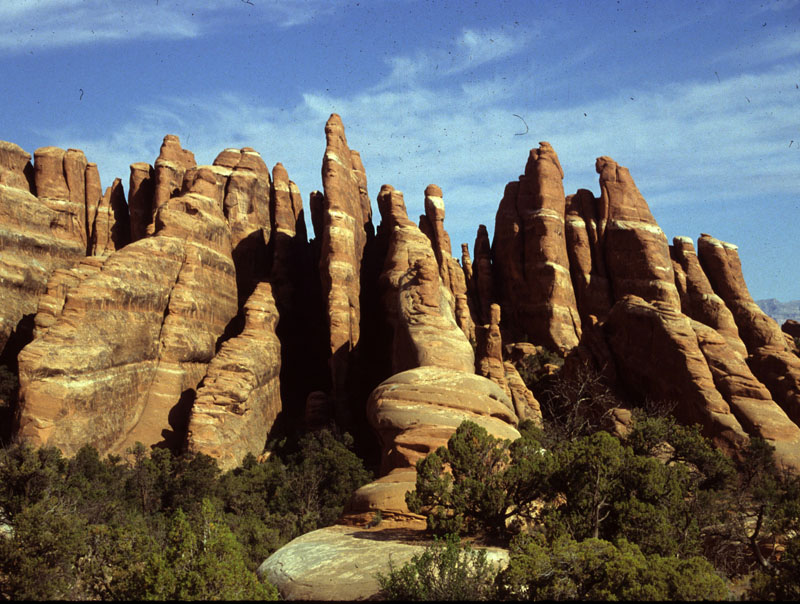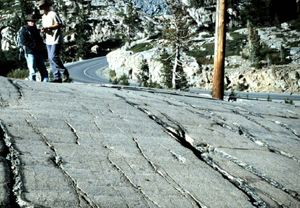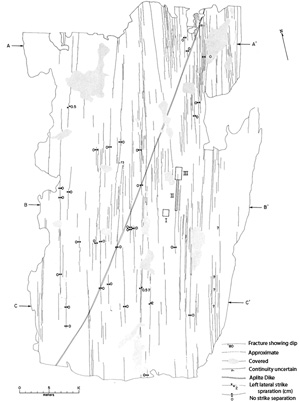| |||||||
|
|
|||||||
|
|
|||||||
| Joint Sets | |||||||
|
It is very rare that a single joint occurs by itself, or that multiple joints have no recognized mutually common attitudes. In fact, joints commonly have consistent orientation and they are pervasive due to the distributed nature of fracturing. This raises the concept of a joint set, which consists of a collection of parallel or sub-parallel individual joints or echelon joint zones. We selected some joint sets from sedimentary and igneous rocks at different scales in Figures 1 to 4. Figure 1 shows a set of fins defined by a set of deeply eroded, slightly sheared joints or joint zones in the Slickrock member of the Entrada Sandstone outcropping in the northern limb of Salt Valley Anticline at Arches National Park, Utah. Figure 2 shows the same joint set responsible for the fins in the previous figure, this time on the top surface of the Moab member which is stratigraphically above the red colored Slickrock member of the Entrada Sandstone shown in the previous image, here without much erosion along the joints or joint zones.
Figure 3 and Figure 4 show two examples of joint sets on glaciated surfaces of granitic rocks of the Sierra Nevada, Nevada and California. Figure 3 is a photograph of a joint system at Donner Pass, at the Nevada-California border and Figure 4 is map view of a joint/vein array at Bear Creek, California (Segall and Pollard, 1983). Note that no shear offset is visible across an older aplite dike (diagonal in the view). Three of the most important geometric properties of a joint set are length, height, and spacing distributions, which evolve as a joint set develops. These properties are affected by many factors including the magnitude and rate of strain, layering and layer interfaces, layer thickness, and elastic or plastic properties of rock. See 'Geostatistical Properties of Joint Sets' for additional information. | |||||||
| Reference: |
|||||||
| Cruikshank, K.M., Aydin, A., 1995 Dyer, J.R., 1983 Engelder, T., Geiser, P.A., 1980 Pollard, D.D., Aydin, A., 1988 Segall, P., Pollard, D.D., 1983 |
|||||||
|
Readme | About Us | Acknowledgement | How to Cite | Terms of Use | Ⓒ Rock Fracture Knowledgebase |
|||||||



